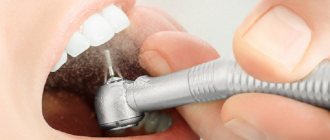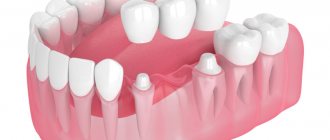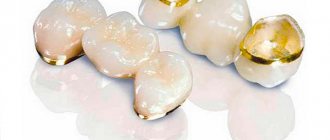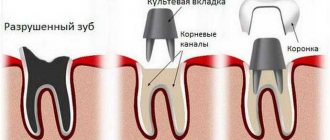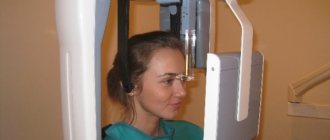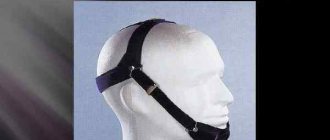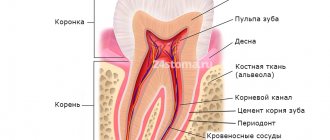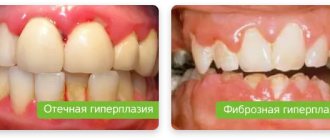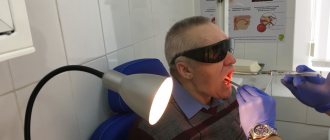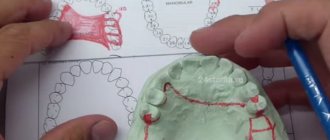Are you planning microimplant orthodontic treatment with the installation of braces? Perhaps you, as a potential patient, are considering microimplants as an alternative to traditional implants that are screwed into the bone? Everything you need to know about microimplants, indications for their use and possible contraindications is in our material. Experts share their independent opinions and reveal facts that are not always discussed in dentistry. Read the material to the end to be aware of all the important nuances.
General information about microimplants
Microimplants are small (about one millimeter in diameter) titanium pins that are screwed into the patient’s bone and pass through the gums, thereby providing a reliable support for the orthodontic brace system. They perform a temporary function if they are placed during orthodontic treatment.
Visually, a microimplant is similar to a miniscrew, but has a specific head. The total length of the microimplant is from 0.6 to 1.2 cm. Unlike classical implants, the microimplant is screwed into the patient’s gums and, if necessary, can be removed without damaging living tissue.
Indications and restrictions
Microimplants are indicated in cases where tooth movement requires powerful support and/or a complex movement pattern. Such cases include the following:
- Distal displacement of maxillary and mandibular molars.
- Retraction or protraction of the upper or lower jaw.
- Vertical displacement of teeth (extrusion, intrusion).
- Impaction of molars and canines.
Of course, these are not all cases in which microscrews can be used. The practice of orthodontists is replete with situations in which the use of skeletal supports is appropriate.
Contraindications to the installation of microimplants may be factors related to both orthodontic treatment and the installation of conventional implants, since the use of microscrews, for obvious reasons, simultaneously affects the field of orthodontics and implantation.
Poor oral hygiene, periodontal disease, serious systemic diseases in the form of impaired bone regeneration, endocrinological pathologies, diabetes mellitus, etc. - all this can impose restrictions on the use of skeletal support.
However, it should be taken into account that due to the compactness of microimplants, contraindications to their use may not be as categorical as for conventional implants. Ultimately, the orthodontist makes the decision in each case.
Mini-implants can be used simultaneously with braces - in cases where the movement of individual teeth requires the creation of an anchorage that braces cannot provide.
In particular, a microimplant can be installed to distally move the painter , while the arch of braces will move a vestibular premolar or canine to the vacated space.
When should microimplants be installed?
We bring to your attention two areas of clinical cases where patients usually require microimplants for treatment:
- Installation of a microimplant when correcting a patient’s bite. Here, a miniscrew is used to move teeth along the desired path as part of orthodontic treatment. Therefore, this group of microimplants is called orthodontic. For example, a patient needs to move one tooth without changing the position of the others. If you selectively move one tooth while supporting another (for example, the back one, as was done before the advent of orthodontic microimplants), there is a high probability that both teeth will move. In this way, the micro-implant helps balance the traction force, thereby helping to straighten natural teeth. After successful orthodontic treatment, the microimplant is usually removed.
- Installation of a microimplant during prosthetics. Microimplants serve as a good support for prosthetic structures - they are screwed into the bone. This is a more gentle treatment technology compared to implanting full titanium implants in patients. These microimplant solutions do not require a large amount of bone to be built up and cope well with the load. In most clinical cases, four to six microimplants are sufficient for one jaw to successfully install a prosthesis. Also, single dentures can be placed on micro-implants embedded shallowly in the bone, especially in cases where tooth implantation is required in the upper jaw (classical implants can affect the maxillary sinuses).
Dentistry for those who love to smile
+7
Make an appointment
Let's summarize the advantages
To top it off, let’s summarize all of the above and highlight the main advantages of using microimplants in treatment with braces:
- the patient does not need to independently monitor the brace system, change elastic bands daily or wear external braces,
- suitable for use even in conditions of increased tooth mobility,
- high level of comfort even during meals,
- the ability to correct a complex defect without removing teeth,
- the ability to reduce the number of fixed staples and significantly reduce treatment time.
Microimplants look like small screws made of titanium or its alloys. Their use almost never causes allergic reactions. It is believed that this is an absolutely safe option to significantly speed up treatment and make it even more effective.
When is the installation of microimplants contraindicated?
There are a number of clinical cases in which the installation of orthodontic microimplants is not recommended for patients (contraindications are not absolute; after treating the problems, you can return to the question):
- for diabetes mellitus;
- in case of inflammation in the oral cavity;
- in case of gum disease in a patient;
- when the bone is loose, there is a risk that treatment may not be effective;
- if the patient smokes and cannot give up this harmful habit.
Orthodontic microimplants – make treatment with braces even faster and more effective
Orthoimplants appeared in dental practice a little over 20 years ago. Their development belongs to an American specialist named Sandax. The invention he proposed created a real sensation in its time, and similar orthodontic implants began to be actively used in practice all over the world. In size they are as much as 4 times smaller than their classically shaped counterparts. The thickness of only 2 mm makes it possible to make the hole for such an implant very, very small, and therefore without the risk of developing any complications. Read more about orthodontic microimplants later in this article.
Possible complications
Due to the ease of installation of microimplants and their small size, problems with the creation of skeletal support are very rare, but not completely excluded. There are 3 types of complications that the doctor and patient may encounter:
- Trauma to the roots of a tooth with a mini-implant when screwing it in. Possible with branched roots and insufficient examination of the radiograph by the doctor. The error can be corrected by reinstalling the microimplant.
- Broken when screwed in or out. The reason is the wrong choice of installation or removal method, careless work. If this happens, the microimplant fragment is removed in the most appropriate way under local anesthesia.
- Looseness due to moving force and/or chewing. To correct the situation, reinstallation of the implant will be required.
The most serious and rare complication is rejection, which is corrected by reinstallation. If necessary, the previous insertion site is treated as indicated.
Let's figure out whether there is an alternative to braces and find out the opinion of experts.
In this publication, read how to restore enamel after braces.
Here https://orto-info.ru/sistemyi-vyiravnivaniya-zubov/breketyi/luchshe-postavit-posle-30-let.html we will tell you whether it is worth getting braces at 30 years old.
Alternative methods
Please note that before installing orthodontic implants, it is very important to ensure the competence of the orthodontist.
When inserting mini-screws, the doctor is fully responsible for the correct installation and the consequences of his actions.
That is why, before choosing a specialist and a clinic, you should read the reviews of patients who have already installed such structures and learn more about the experience of the doctor who will perform the implantation.
A rash decision is to refuse to install orthodontic mini-screws.
If there are no micro-implants, then the burden on a person increases, since he is forced to use complex devices and strictly follow dental instructions.
Instead of mini-screws, the following types of structures can be used:
- complex face bow;
- rubber intermaxillary rods used to create the correct connection between the jaws;
- alternatively, one or more teeth may be removed.
Advantages of cooperation with the team of the World of Dentistry clinic
- Our doctors are one close-knit team. All therapeutic decisions are coordinated with related specialists in order to eliminate the risks of complications. Orthodontic treatment, which involves the installation of microimplants, is one of the key areas of the clinic. At the same time, during fixation of the microimplant, in addition to the surgeon, a therapist and an orthopedist work with the patient. This ensures high-quality therapy results.
- We guarantee the sterility of microimplants and instruments used for their installation. All procedures are performed in an office equipped in accordance with all necessary standards and regulations.
- We have at our disposal the best modern equipment that allows us to quickly and efficiently carry out treatment.
- We can carry out a quick, comprehensive diagnosis, which saves the patient’s time.
- We follow a reasonable, fair pricing policy and before starting treatment we draw up an agreement in which we indicate a fixed price. Our patients know exactly how much they will pay and for what services. The cost of treatment does not change throughout the entire period of therapy.
What do braces fix?
Braces are used to correct bites and eliminate various pathologies. Among the indications:
- malocclusion – problems with the closure of the dentition;
- disproportionate development of the jaws;
- displacement of individual teeth beyond the jaw row;
- jaw deformation during formation;
- large gaps between teeth.
Many bite problems are visible even to non-professionals, but some anomalies will only be noticed by a specialist. Dentists strongly recommend that you periodically show your child to an orthodontist to monitor the change of teeth, evaluate the growth of the jaw bones, and monitor the work of the facial muscles.
How much do mini implants cost?
Many people are concerned about the cost of mini-implants. As already mentioned, the price of mini-implants is lower than that of classical systems. This is especially true for top-end structures, the installation of which can cost 50 thousand rubles or more. The price of one mini-implant averages 12 – 15 thousand rubles. At the same time, a single installation of a mini-implant is used mainly only in orthodontics: a larger number is required for orthopedic treatment. The price for prosthetics with mini-implants is approximately 90 – 120 thousand rubles. The total amount depends on the manufacturing company, the quality of the orthopedic design, as well as the level of the dental clinic in Moscow where the treatment is carried out.
Care rules and service life
Proper care involves carefully brushing the teeth in the area where the system is located. It is advisable to use a toothbrush with soft bristles, brushes, and mouthwash.
Depending on the condition of the mucous membrane and bone at the site of installation of the mini-implant, the doctor may prescribe antiseptic and antibacterial procedures for the first few days - treating the implant with a gauze swab soaked in chlorhexidine, taking antifungal and antibacterial agents.
The list of general recommendations includes avoiding cold, hot and solid foods in the first week.
Microimplants are installed for the entire period of orthodontic treatment with their participation, after which they are removed. Standard use time is 3-6 months. But this period can be changed to decrease or increase depending on the clinical picture.
Patient reviews
When the dentist announced the impossibility of fixing the bridge, I immediately felt uneasy. There was a proposal to install mini-implants with clasp dentures. I happily agreed and don’t regret it. In a private dental clinic, 2 mini-screws were screwed in, onto which the dentures were secured. I am completely satisfied with the procedure. The dentures are worn very securely and do not wobble.
Igor
Thanks to microimplants, I got rid of the constantly rotating nylon prosthesis. And I don't regret it at all. The prosthetics are made with only two small screws, which ensure the reliability of the structure. And there is no need to fasten it with any adhesives.
Igor
When I needed removable prosthetics, I immediately panicked.
It was not clear to me how the prosthesis would be attached to the bone. But full implantation was very expensive. And so I took a risk by installing mini-implants. I was satisfied. The procedure was carried out painlessly. The dentures are attached firmly, there are no problems with chewing food. I recommend! Catherine
